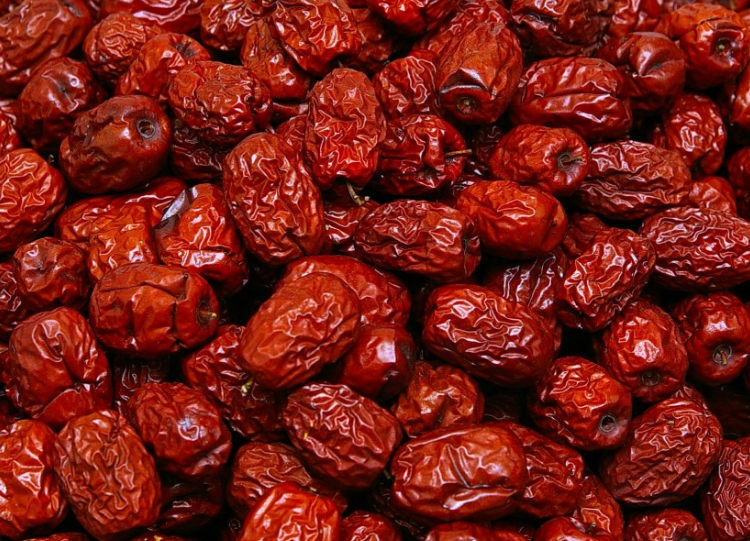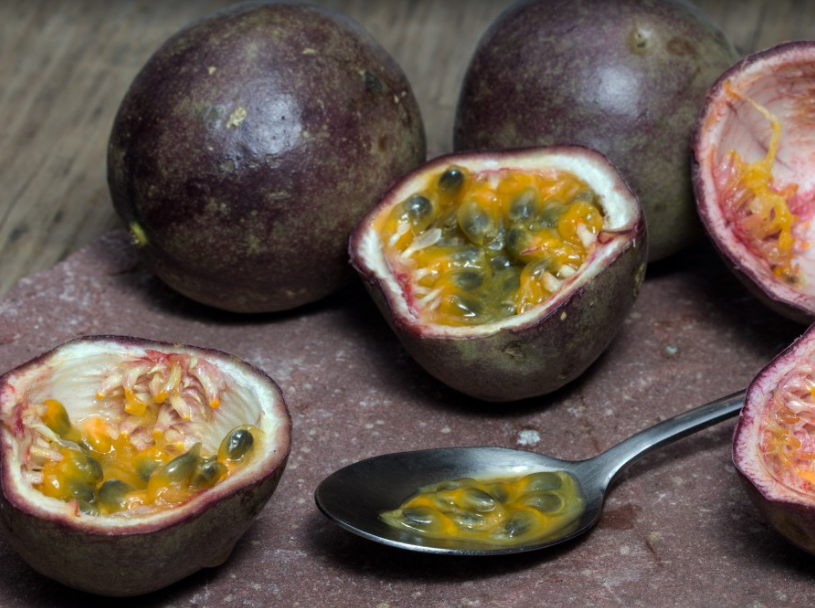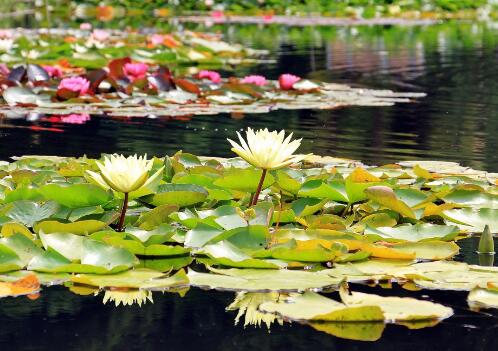What are the effects and effects of golden jujube? What's the difference between red jujube and red jujube? (with bonsai cultivation techniques)
Golden jujube is a fine jujube, its nuclear small meat thick, golden silk, taste is particularly sweet, nutritious, especially the vitamin content is particularly high, people can tonify blood and beauty after eating. So what are the effects and effects of golden jujube? What's the difference between red jujube and red jujube? How to cultivate bonsai?

First, what are the effects and functions of golden jujube?
1. Lower blood pressure and cholesterol
The content of vitamin P in golden jujube is the highest in all fruits and vegetables. it can maintain capillary permeability and improve microcirculation so as to prevent arteriosclerosis. It can also regulate human metabolism, enhance immunity, anti-inflammation, anti-allergy, reduce blood sugar and cholesterol content, etc. Rutin can protect capillaries from patency and prevent vascular wall fragility from increasing.
2. Protect the liver
Golden jujube can improve the phagocytosis of monocytes in the body, protect the liver and enhance physical strength; vitamin C in golden jujube can reduce the damage of chemical drugs to the liver, promote protein synthesis and increase the content of total protein in serum.
3. Prevention of osteoporosis
Golden jujube plays an important role in the prevention and treatment of anemia caused by osteoporosis. Middle-aged and elderly people often suffer from osteoporosis during menopause. Teenagers and women at the peak of growth and development are prone to anemia. Golden jujube will have a very ideal dietotherapy effect on them. its effect is usually unmatched by drugs.
4. Prevention and treatment of cardiovascular diseases
Golden jujube is rich in vitamin C and vitamin P, which is very beneficial to improve capillaries, maintain vascular wall elasticity and resist atherosclerosis; golden jujube contains cAMP, whose pharmacological effect is to improve human microcirculation, dilate coronary arteries, increase blood supply to brain and heart, slow down heart rhythm, reduce myocardial oxygen consumption and improve ischemic myocardial metabolism, so it can prevent and cure cardio-cerebrovascular diseases.
5. Anti-cancer and anti-cancer
Golden jujube can improve human immunity and inhibit cancer cells. It can promote the production of white blood cells, reduce serum cholesterol, increase serum albumin and protect the liver. Golden jujube also contains substances that inhibit cancer cells and even transform cancer cells into normal cells.
Second, what is the nutritional value of golden jujube?
Golden jujube is rich in vitamins, as well as protein, fat, crude fiber, phosphorus, calcium, iron, potassium, sodium, magnesium, chlorine, iodine, niacin, vitamin A, B1 and other vitamins.
1. Jinsi jujube is very rich in nutrition. Fresh jujube contains 20% Mel 36% sugar and dried jujube contains 55% MUE 80% sugar. It contains a lot of calories and can be used as a substitute for grain. In history, it is often used for disaster relief.
2. The content of vitamin C is among the best in fruits, reaching 0.1-0.6 grams per 100 grams, about 100 times higher than apples and peaches, and the content of vitamin P is also the top of all fruits.
3. Vitamin C in golden jujube can reduce the damage of chemical drugs to liver, promote protein synthesis and increase the content of serum total protein.
4. The fresh jujube contains 1.2 grams of protein per 100 grams, which is almost the top of the fresh fruit category. Dry golden jujube produces high heat, about 1200-1300 kilojoules per 100 grams, which is close to raisins, and the contents of protein, calcium, phosphorus, riboflavin and niacin are higher than those of raisins. Therefore, people have always regarded red dates as an excellent tonic.
Third, what is the difference between golden jujube and red jujube?
1. Jinsi jujube is evolved from sour jujube.
Golden jujube has beautiful color, abundant nuclear meat, continuous golden silk, delicious nectar, rich nutrition, known as natural "vitamin pill", is a good nourishing food. Jinsi jujube contains up to 70-80% sugar and is rich in a variety of vitamins and minerals such as calcium, phosphorus and iron. It has the functions of relaxing muscles and activating blood circulation, dispersing stasis and invigorating new blood, opening the spleen and moistening the lungs, enhancing body immunity and lowering cholesterol.
2. Red jujube, also known as jujube
In the Chinese herbal medicine book Benjing, it is recorded that the sweet taste of red jujube is warm and returns to the spleen and stomach meridian, which has the functions of tonifying qi, nourishing blood and calming the nerves, while modern pharmacology has found that red jujube contains protein, fat, carbohydrates, organic acids, vitamin A, vitamin C, a variety of trace calcium and amino acids and other rich nutrients.
3. The difference between the two:
First, the size is different.
Second, the taste.
There are many different views on this, jujube meat is more, jujube meat is less, like a mouthful to eat, will certainly say jujube delicious.
However, the jujube is sweeter and more delicate. If you like to taste it carefully, you will find it. The jujube tastes very good. It is better for jujube to cook porridge.
Third, efficacy.
In traditional Chinese medicine, there is no difference in the size of purple dates. The function is exactly the same as the attending.
Jujube: Buzhong Yiqi, nourishing blood and calming the mind. For spleen deficiency, lack of strength and loose stool.
Jujube: it has the effects of tonifying spleen and stomach, nourishing yin and blood, nourishing the heart and calming the mind and relaxing the medicinal properties.
Fourth, the price, jujube and jujube are cheaper than jujube.
Golden jujube can be eaten in a variety of ways, not only raw food, but also can be cooked, boiled soup or used as an ingredient for stews, can also be made into a variety of traditional sweet and sticky food. It can also be processed into honey jujube, sugar jujube, crisp jujube, smoked jujube, drunken jujube, jujube tea, jujube wine and other popular flavor drinks.
4. Bonsai cultivation techniques of golden jujube
1. Raise seedlings, cultivate jujube seedlings in nutrient solution to adapt to hydroponic environment, pH value is 6. 0-8. 0; trim leaves and stems to form bonsai When pruning, the whole tree should retain 5-8 main branches, which are planted on the central trunk in 2-3 layers, 4-5 main branches in the first layer, 2-3 in each layer above, and the distance between layers should be kept at 0.2 m-0.4 m. A large number of jujube strands can be formed on other jujube heads and permanent secondary branches.
2. Bonsai modeling, the waste produced during the manufacture of foaming materials will be molded, punched, directly under the bonsai, and filled with absorbent sponges.
3. Transplant the cultivated seedlings of Ziziphus jujuba to the bonsai after modeling treatment.
4. Put the bonsai of transplanting golden jujube seedlings into a shaped process basin, add soil containing base fertilizer to the process basin, and then pour enough water for the first time, and water every five days after ten days, so that the plants have enough water all the time.
Wherein, the raw material ratio of the base fertilizer is calculated according to the number of parts by weight. Including 2-5 parts of rapeseed cake, 5-10 parts of castor cake, 3-12 parts of peanut straw and shell, 5-8 parts of rotten grass leaves, 1-3 parts of distiller's grains, 15-20 parts of dried pollution-free pond mud, 15-20 parts of organic fertilizer starter, 2-5 parts of urea, 4-8 parts of diammonium phosphate, 1-5 parts of potassium chloride, 7-10 parts of amino acid chelated iron and 3-5 parts of amino acid chelated calcium. The basic fertilizer applied to the seedlings of golden jujube was obtained after fermentation in the fermentation box.
Time: 2019-03-14 Click:
- Prev

Do you know the nine techniques of passion fruit bonsai cultivation? How to spend the winter? (with nutritional value)
Passion fruit is a kind of tropical fruit. After it was introduced and cultivated in China, it is mainly distributed in the warm and humid areas of the south, and family potted plants are also common. What are the nine techniques of passion fruit bonsai cultivation? How to spend the winter? What are the nutritional values? What are the nine techniques of bonsai cultivation?
- Next

How to raise the beautiful and elegant lotus? Does it have to be hydroponic? (with planting method)
As the saying goes, if your heart is like a lotus, you are not afraid of flashy and noisy; if you are calm at the bottom of your heart, you are not afraid of the long way to go. Lotus symbolizes nobility, comes out of the mud without stain, and is deeply loved by flower growers. How to raise lotus flowers? Does it have to be hydroponic? What is the specific planting method? Let's get to know it together. How to raise lotus flowers
Related
- Fuxing push coffee new agricultural production and marketing class: lack of small-scale processing plants
- Jujube rice field leisure farm deep ploughing Yilan for five years to create a space for organic food and play
- Nongyu Farm-A trial of organic papaya for brave women with advanced technology
- Four points for attention in the prevention and control of diseases and insect pests of edible fungi
- How to add nutrient solution to Edible Fungi
- Is there any good way to control edible fungus mites?
- Open Inoculation Technology of Edible Fungi
- Is there any clever way to use fertilizer for edible fungus in winter?
- What agents are used to kill the pathogens of edible fungi in the mushroom shed?
- Rapid drying of Edible Fungi

